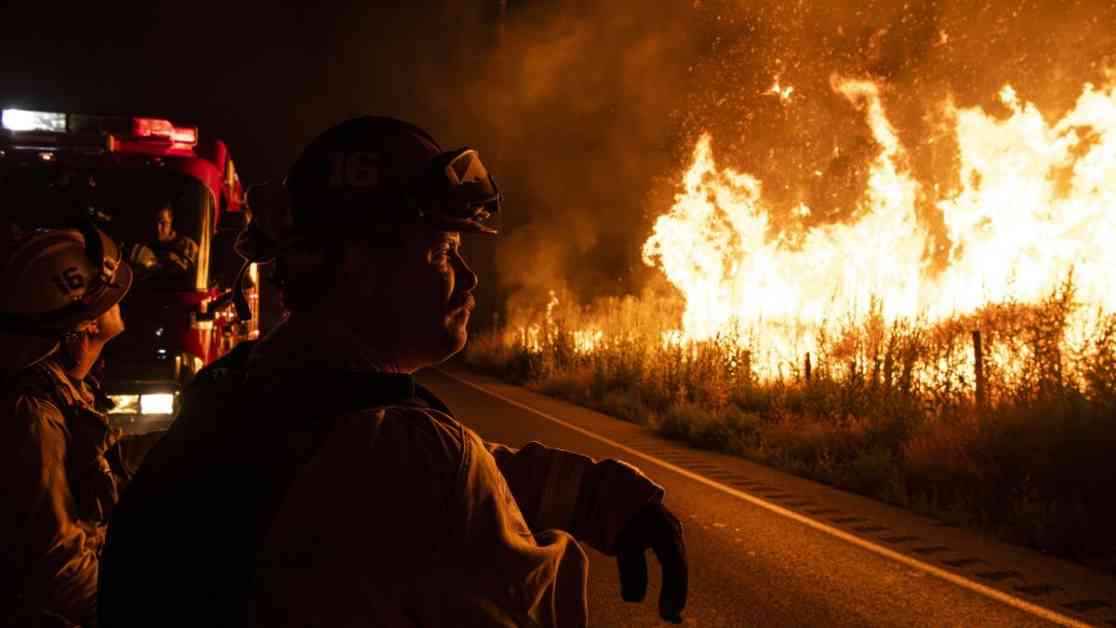California Legislators Push for Full-Time Employment of Seasonal Firefighters
As winter fires continue to ravage Southern California, lawmakers are advocating for a shift in the employment structure of the state’s primary firefighting agency. Instead of operating on a seasonal basis, a bipartisan group of legislators in California has proposed a bill to transition approximately 3,000 seasonal firefighters from the California Department of Forestry and Fire Protection to year-round positions. This move aims to ensure a more proactive and sustained approach to combating wildfires throughout the year.
The Need for Year-Round Firefighting Efforts
The call for full-time employment of seasonal firefighters comes in response to the escalating challenges posed by an extended and intensifying wildfire season in California. Senate Pro Tem Mike McGuire emphasized the urgency of this shift, highlighting the continuous threat of wildfires that demand a year-round readiness and response. With climate change exacerbating fire risks and making blazes more unpredictable and destructive, the traditional concept of a limited fire season no longer applies.
Experts from UC Irvine have underscored the impact of climate change and urban development on the lengthening of the historical fire season, reinforcing the need for enhanced staffing levels and preparedness. Senator Sasha Renée Pérez emphasized the firsthand experiences of firefighters facing staffing shortages and the critical role of additional personnel in effective disaster response. The proposed legislation, known as the Fight for Firefighters Act, seeks to address these pressing needs and ensure that firefighting resources are available when and where they are needed most.
Challenges and Opportunities in Firefighter Employment
Despite the clear benefits of transitioning seasonal firefighters to full-time status, there are practical and financial considerations to address. The estimated cost of maintaining year-round staffing for approximately 3,000 firefighters is projected to be $175 million annually. While the funding source for this initiative remains uncertain, the potential benefits in terms of improved wildfire response, community safety, and firefighter well-being are significant.
Cal Fire currently follows a seasonal employment model, with firefighters typically working from April to December before facing layoffs during the winter months. However, recent trends in fire behavior and climate conditions have necessitated a reassessment of this approach. The agency’s spokesperson, Jesse Torres, highlighted the evolving nature of fire threats and the need for a more flexible and sustained workforce to address these challenges.
Governor Gavin Newsom’s previous veto of a similar bill underscored the complexity of balancing staffing needs with broader workforce planning initiatives. While efforts to hire additional full-time firefighters with revised work schedules were underway, the proposed legislation represents a focused and targeted approach to addressing the specific needs of Cal Fire crews. Recognizing the mental health challenges faced by firefighters and the importance of job stability and support, lawmakers are prioritizing the well-being and effectiveness of the firefighting workforce.
Closing the Gap to Enhance Firefighting Capabilities
In conclusion, the push for year-round employment of seasonal firefighters in California reflects a proactive and comprehensive strategy to enhance the state’s firefighting capabilities in the face of evolving fire risks. By transitioning a significant portion of the firefighting workforce to full-time positions, policymakers aim to improve response times, preparedness, and resilience in the fight against wildfires. This legislative initiative not only seeks to address immediate staffing needs but also prioritizes the long-term sustainability and effectiveness of California’s firefighting efforts. As the state grapples with the increasing impacts of climate change and urban development on fire dynamics, investing in a skilled and stable firefighting workforce is crucial to safeguarding communities and natural landscapes from the growing threat of wildfires.


